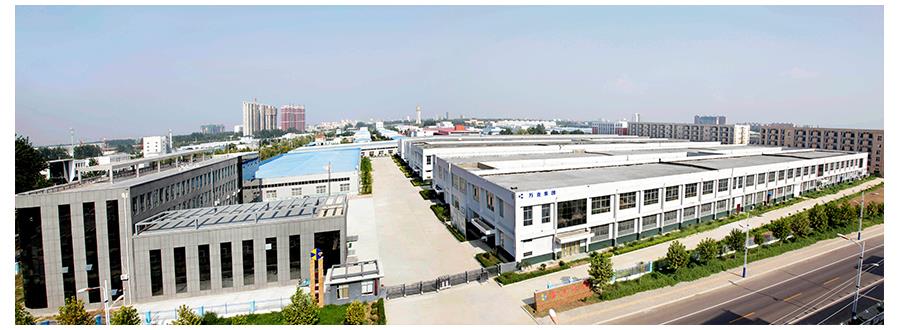What will affect the performance of diamond grinding wheels?
-2020-06-15 16:40:03 -
Factors affecting the performance of diamond grinding wheels: type of diamond, diamond particle size, diamond concentration, type of bonding agent, hardness of grinding wheel, shape and size of grinding wheel, etc.
1.Types of diamonds: The diamond abrasives used to manufacture diamond grinding wheels can be selected from natural diamonds and artificial diamonds.
2.Diamond particle size: The selection of particle size should be considered from the following aspects:
· Processing requirements: coarser diamonds are used for rough grinding, and finer diamonds are used for fine grinding;
· Types of bonding agent: use coarser particles for the bonding agent with high diamond bonding strength, and use finer particles for the bonding agent with poor diamond bonding strength;
· Grinding efficiency of the grinding wheel: Under the condition that can meet the processing requirements and the strength of the bonding agent is sufficient, coarser-grain diamond can be selected to improve the grinding efficiency.
3. Type of binder
Category: resin bond, ceramic bond, metal bond, electroplating bond
Bonding capacity and wear resistance: electroplating bonding agent>metal bonding agent>ceramic bonding agent>resin bonding agent

4.Concentration of diamond wheels
The diamond grinding wheel concentration refers to the amount of diamond contained in the unit volume of the abrasive layer.
Selection principle:
· First, the finer the diamond particle size, the lower the selected concentration. When the workpiece requires fine grinding, low concentration should be selected.
· Second, the higher the bonding strength of the binder, the more diamond particles can be firmly bonded, and the higher the selected concentration.
· The third is a grinding wheel that requires a better profile, and the diamond concentration is higher. Such as forming grinding wheels, grinding wheels with wider working surfaces, grinding wheels, etc.
· Fourth, when the polishing quality requirements are not high, in order to improve the polishing efficiency, a higher concentration can be selected.
5.Hardness of diamond grinding wheel
Hardness refers to the strength of the bonding agent. 1. When grinding hard materials, diamond abrasive grains are easy to be blunt. Softer grinding wheels should be used to make diamond abrasive grains fall off and sharpen in time; when grinding soft materials, the opposite is true. However, if you are grinding particularly soft and tough materials, you should choose a softer wheel to avoid clogging the wheel.
· In the case of high grinding temperature and poor cooling conditions, you should choose a softer grinding wheel to avoid burns to the workpiece.
· When grinding discontinuous surfaces and large longitudinal feed, diamond abrasive grains are subject to large forces and are prone to fall off. A harder grinding wheel should be used. Fourth, when the shape grinding and the geometry requirements of the generatrix are high, the hardness of the grinding wheel should be appropriately increased in order to maintain the shape and contour of the grinding wheel. 1. When grinding hard materials, the diamond abrasive grains are easy to be blunt. Sharp; the opposite is true when polishing soft materials. However, if you are grinding particularly soft and tough materials, you should choose a softer wheel to avoid clogging the wheel.
1.Types of diamonds: The diamond abrasives used to manufacture diamond grinding wheels can be selected from natural diamonds and artificial diamonds.
2.Diamond particle size: The selection of particle size should be considered from the following aspects:
· Processing requirements: coarser diamonds are used for rough grinding, and finer diamonds are used for fine grinding;
· Types of bonding agent: use coarser particles for the bonding agent with high diamond bonding strength, and use finer particles for the bonding agent with poor diamond bonding strength;
· Grinding efficiency of the grinding wheel: Under the condition that can meet the processing requirements and the strength of the bonding agent is sufficient, coarser-grain diamond can be selected to improve the grinding efficiency.
3. Type of binder
Category: resin bond, ceramic bond, metal bond, electroplating bond
Bonding capacity and wear resistance: electroplating bonding agent>metal bonding agent>ceramic bonding agent>resin bonding agent

4.Concentration of diamond wheels
The diamond grinding wheel concentration refers to the amount of diamond contained in the unit volume of the abrasive layer.
Selection principle:
· First, the finer the diamond particle size, the lower the selected concentration. When the workpiece requires fine grinding, low concentration should be selected.
· Second, the higher the bonding strength of the binder, the more diamond particles can be firmly bonded, and the higher the selected concentration.
· The third is a grinding wheel that requires a better profile, and the diamond concentration is higher. Such as forming grinding wheels, grinding wheels with wider working surfaces, grinding wheels, etc.
· Fourth, when the polishing quality requirements are not high, in order to improve the polishing efficiency, a higher concentration can be selected.
5.Hardness of diamond grinding wheel
Hardness refers to the strength of the bonding agent. 1. When grinding hard materials, diamond abrasive grains are easy to be blunt. Softer grinding wheels should be used to make diamond abrasive grains fall off and sharpen in time; when grinding soft materials, the opposite is true. However, if you are grinding particularly soft and tough materials, you should choose a softer wheel to avoid clogging the wheel.
· In the case of high grinding temperature and poor cooling conditions, you should choose a softer grinding wheel to avoid burns to the workpiece.
· When grinding discontinuous surfaces and large longitudinal feed, diamond abrasive grains are subject to large forces and are prone to fall off. A harder grinding wheel should be used. Fourth, when the shape grinding and the geometry requirements of the generatrix are high, the hardness of the grinding wheel should be appropriately increased in order to maintain the shape and contour of the grinding wheel. 1. When grinding hard materials, the diamond abrasive grains are easy to be blunt. Sharp; the opposite is true when polishing soft materials. However, if you are grinding particularly soft and tough materials, you should choose a softer wheel to avoid clogging the wheel.
Related News
- Characteristics and Application of Resin Diamond Grinding Disc
- Glass Diamond Drill Bits Revolutionize Precision Drilling in the Glass Industry
- Innovative Diamond Resin Discs Revolutionize Hair Clipper Grinding Efficiency
- Diamond Micropowder Unleashes New Possibilities
- Diamond Powder Revolutionizes Drawing Die Polishing: Unveiling the Ultimate Finishing Solution
- Revolutionizing Gem Polishing with Diamond Micropowder
- Metal Diamond Wheels from HNHONGXIANG
- Diamond Micropowder on the Surface Grinder
- Diamond Micropowder Used in Polishing Liquid
- Glass Diamond Bits
- Classification of Grinder
- Surface Grinding and Surface Grinder









